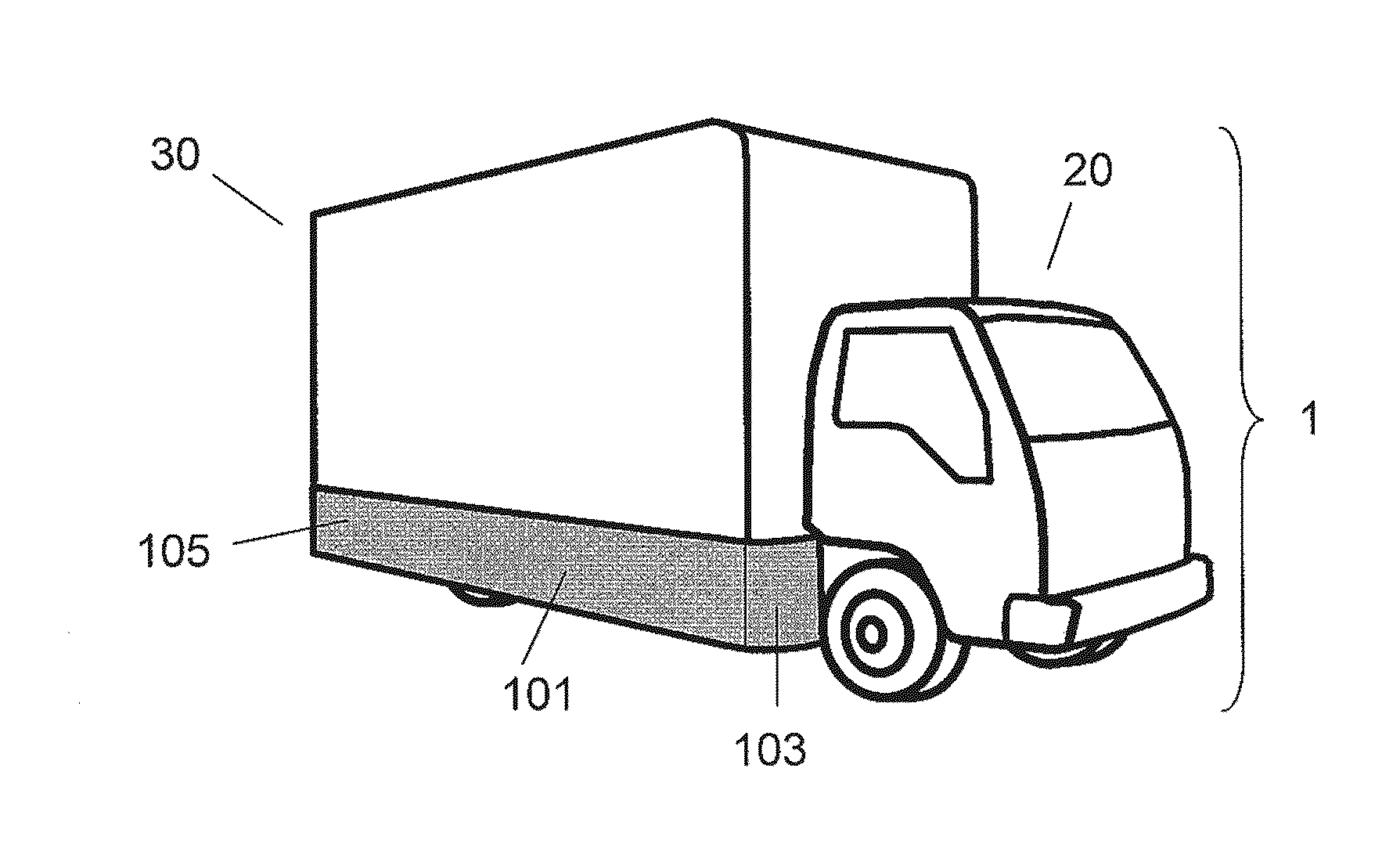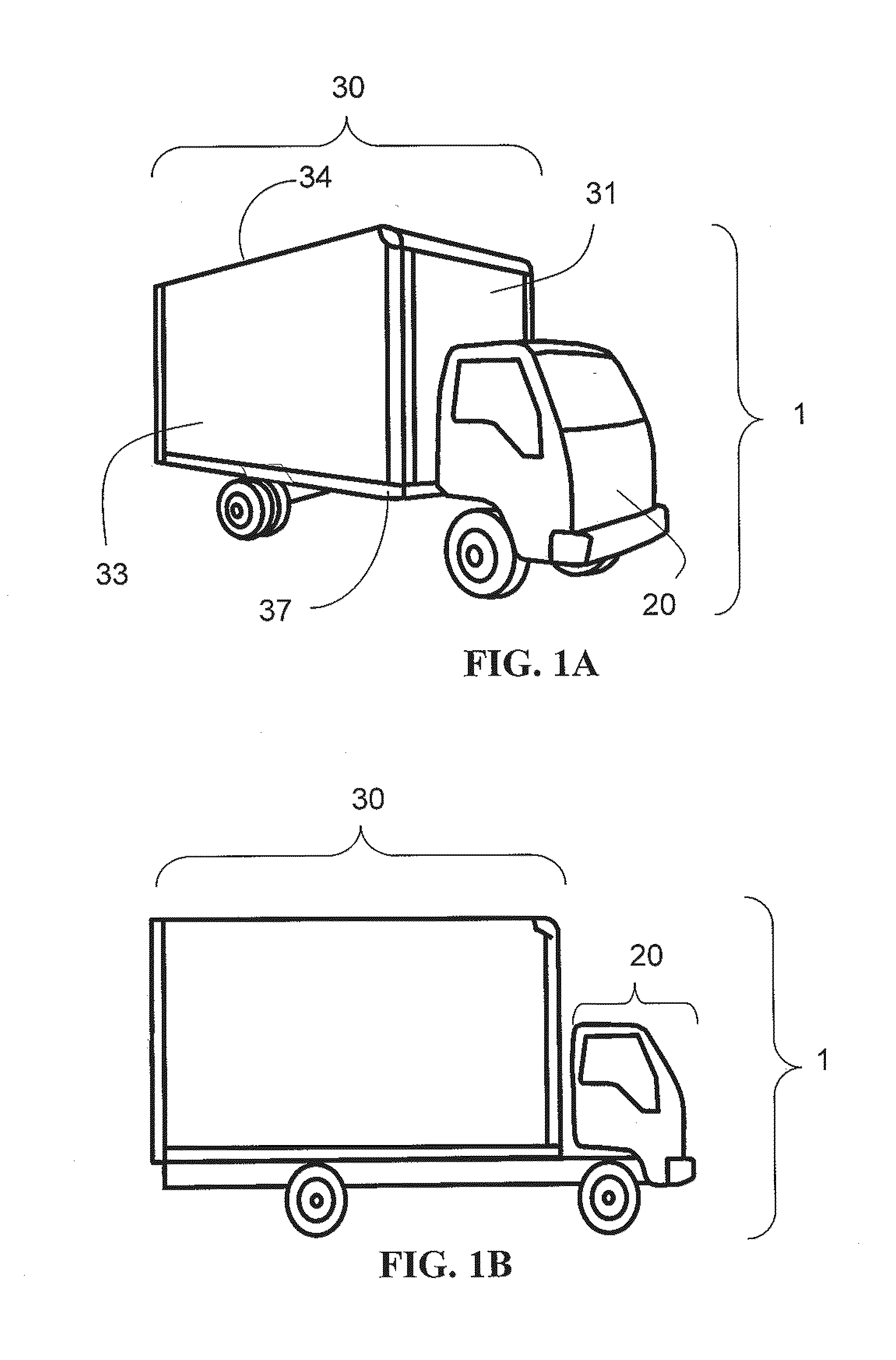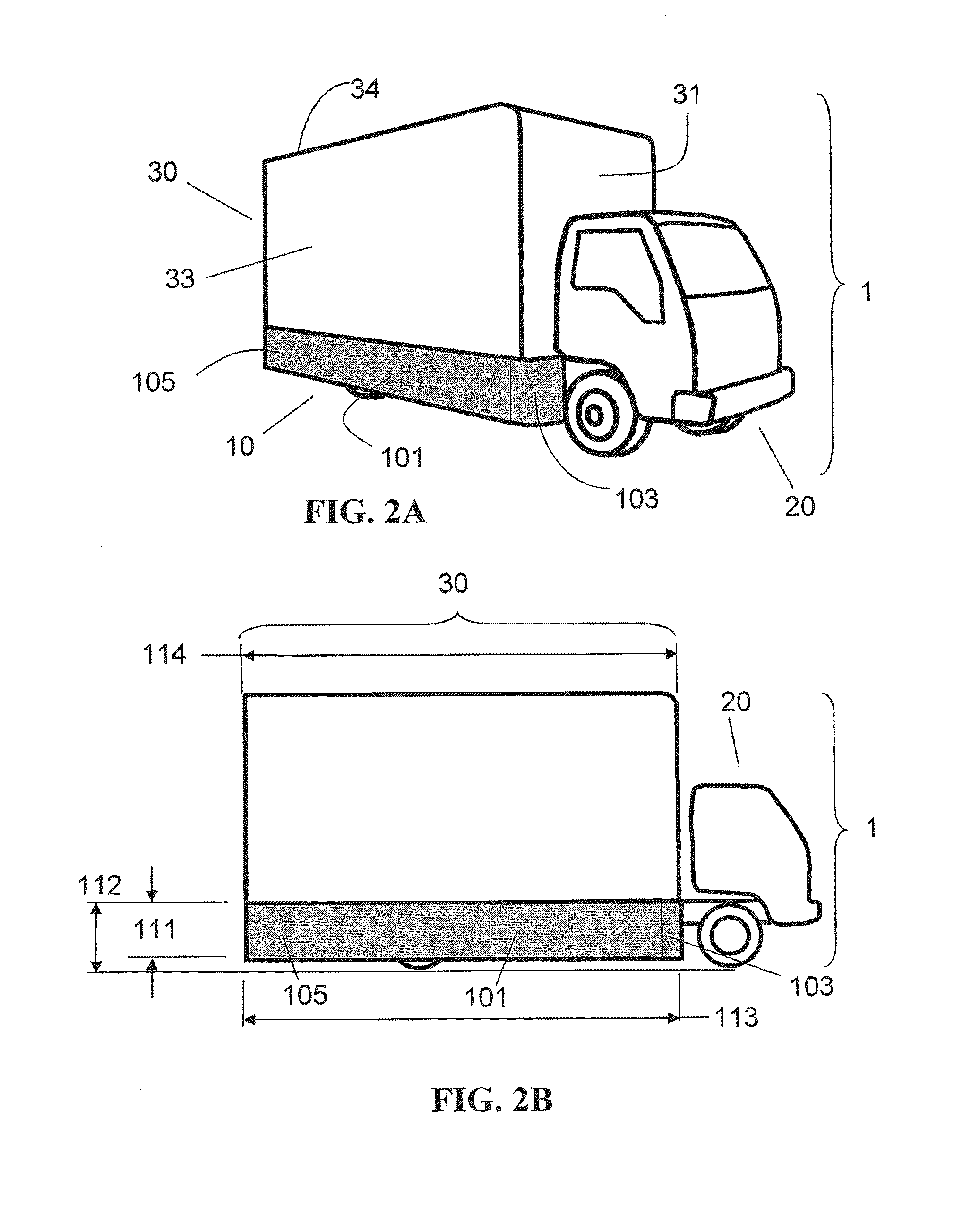Dam skirt aerodynamic fairing device
a technology of aerodynamic fairing and skirt, which is applied in the direction of roofs, transportation and packaging, vehicle arrangements, etc., can solve the problems of limited effectiveness of these devices, unsteady undercarriage flow, and drag in the wheel assembly, so as to reduce the forward projected area, enhance the flow blocking performance of the first and second panels, and reduce the effect of forward projection area
- Summary
- Abstract
- Description
- Claims
- Application Information
AI Technical Summary
Benefits of technology
Problems solved by technology
Method used
Image
Examples
Embodiment Construction
[0044]The following descriptions are of exemplary embodiments of the invention only, and are not intended to limit the scope, applicability or configuration of the invention in any way. Rather, the following description is intended to provide a convenient illustration for implementing various embodiments of the invention. As will become apparent, various changes may be made in the function and arrangement of the elements described herein without departing from the spirit and scope of the invention. For example, though not specifically described, many shapes, widths, leading edge shapes, spacing and orientation of the aft portion and forward portion of the structure and panels, candidate vehicles that can benefit from the device, fabrication means and material, attachments means and material should be understood to fall within the scope of the present invention.
[0045]Disclosed is an aerodynamic device for reducing drag on a ground vehicle, with the typical ground vehicle having a cab...
PUM
 Login to View More
Login to View More Abstract
Description
Claims
Application Information
 Login to View More
Login to View More - R&D
- Intellectual Property
- Life Sciences
- Materials
- Tech Scout
- Unparalleled Data Quality
- Higher Quality Content
- 60% Fewer Hallucinations
Browse by: Latest US Patents, China's latest patents, Technical Efficacy Thesaurus, Application Domain, Technology Topic, Popular Technical Reports.
© 2025 PatSnap. All rights reserved.Legal|Privacy policy|Modern Slavery Act Transparency Statement|Sitemap|About US| Contact US: help@patsnap.com



